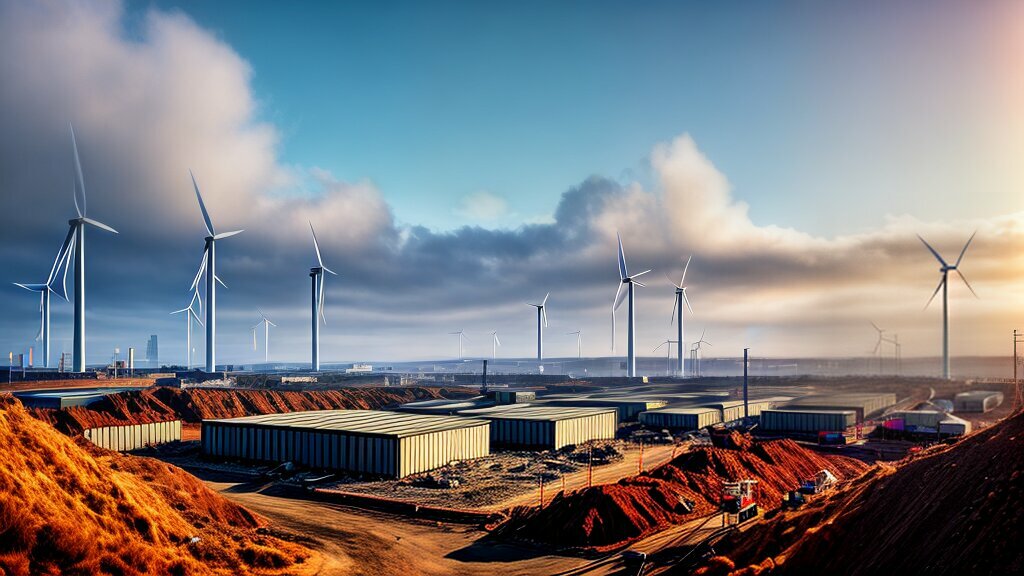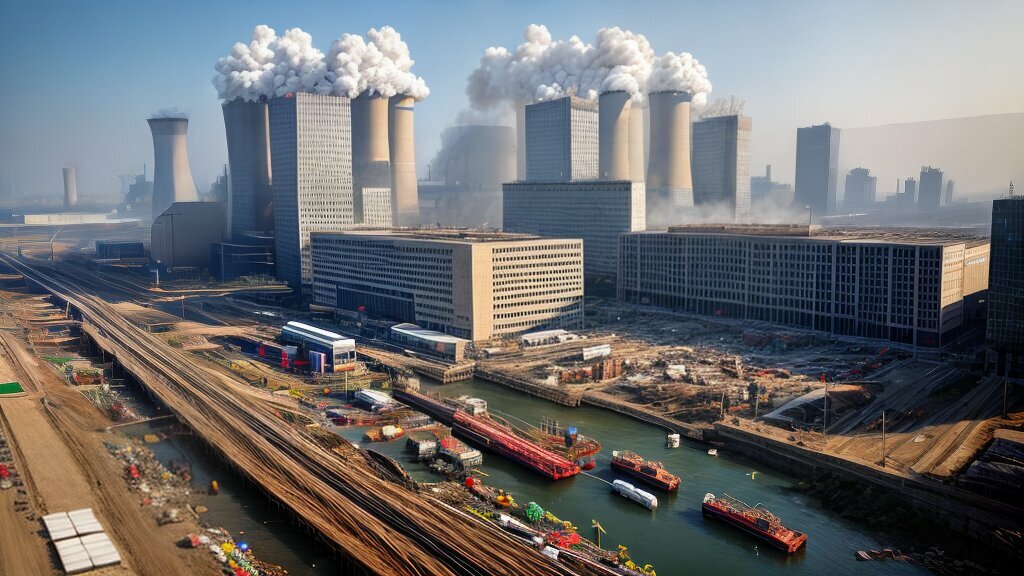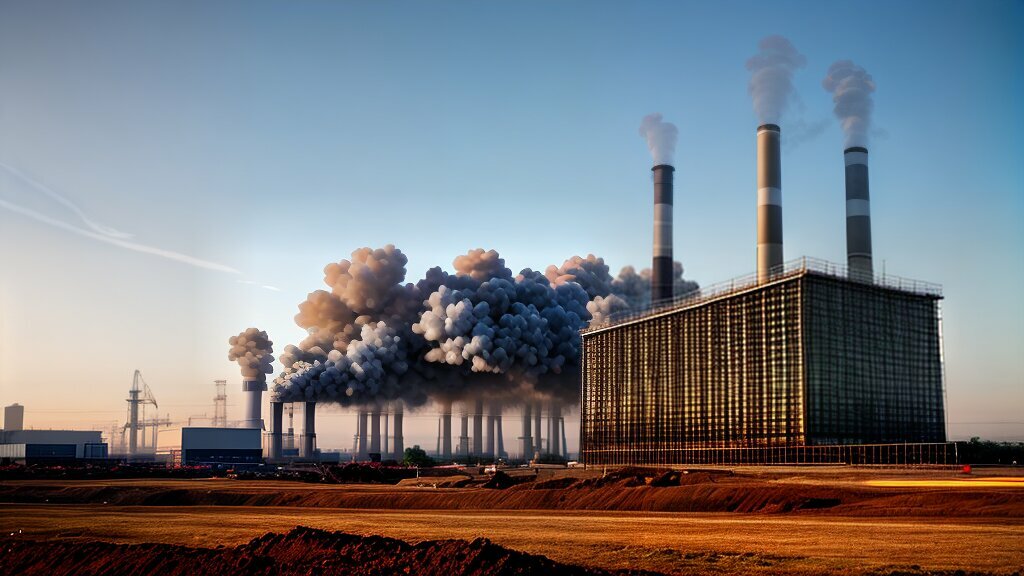Welcome to our article on waste-to-energy solutions, an innovative approach to transforming construction waste into valuable resources. With the rising demand for sustainable waste disposal methods and renewable energy generation, the construction industry has an opportunity to embrace waste-to-energy solutions to reduce waste and generate clean energy.
By adopting this approach, we can reduce our dependency on fossil fuels, decrease greenhouse gas emissions, and create a circular economy where waste is treated as a resource. In this article, we will explore the potential of waste-to-energy solutions in the construction industry and the benefits they can offer to businesses and the environment.
Key Takeaways
- Waste-to-energy solutions can transform construction waste into valuable resources.
- Sustainable waste disposal methods and renewable energy generation are crucial for the construction industry.
- Waste-to-energy solutions offer economic and environmental benefits and have the potential to reduce our carbon footprint.
The Need for Eco-Friendly Waste Management
Construction waste is a significant environmental challenge in the modern world. The construction industry generates a vast amount of waste every year that needs safe disposal. Improper waste disposal can have severe negative consequences on the environment, including soil contamination, air and water pollution, and the loss of natural resources.
Eco-friendly waste management is the solution to this challenge. Sustainable waste disposal methods aim to minimize the environmental impact of waste disposal while maximizing the recovery of valuable resources.
Adopting eco-friendly waste management practices can reduce the carbon footprint of construction activities and promote a circular economy approach. The circular economy approach aims to create a closed-loop system where resources are recovered and reused, reducing the need for virgin materials.
The Need for Eco-Friendly Waste Management
Implementing eco-friendly waste disposal methods can have several benefits. First, it helps reduce the volume of waste going to landfills, reducing the pressure on limited landfill capacity. Second, sustainable waste disposal methods reduce the greenhouse gas emissions generated during waste disposal. Third, eco-friendly waste management practices create a sustainable source of raw materials, promoting resource efficiency.

Overall, adopting eco-friendly waste management practices is crucial to promoting sustainable construction practices and minimizing the impact of construction activities on the environment. The next section will delve deeper into the concept of waste-to-energy solutions and how it can transform construction waste into valuable resources.
Introduction to Waste-to-Energy Solutions
The construction industry generates vast amounts of waste every year, including materials such as concrete, wood, and metals. Traditional waste disposal methods, such as landfilling and incineration, pose significant environmental challenges and contribute to the depletion of natural resources.
However, waste-to-energy solutions offer a sustainable alternative to conventional waste management practices. These solutions enable the conversion of construction waste into renewable energy sources, such as bioenergy, powering homes and businesses while also reducing the carbon footprint of the construction industry.

Waste-to-energy solutions are transforming the construction industry, providing opportunities to reduce waste and generate clean energy.
In waste-to-energy solutions, waste is converted into energy through various technologies, including incineration, anaerobic digestion, pyrolysis, and gasification. The energy can then be used for electricity or heat generation, or transformed into valuable products, such as chemicals, fertilizers, or fuel.
Waste-to-energy solutions have significant potential for the construction industry, providing economic and environmental benefits. By adopting these solutions, construction companies can reduce landfill usage, cut transportation costs, and generate revenue from the sale of energy. Additionally, waste-to-energy solutions contribute to the circular economy, using waste as a resource and promoting sustainable resource recovery.
Renewable Energy Generation
One of the main advantages of waste-to-energy solutions is their contribution to renewable energy generation. As the construction industry is one of the largest energy consumers globally, transitioning to renewable energy sources is critical for reducing greenhouse gas emissions and mitigating climate change.
Moreover, waste-to-energy solutions can help reduce dependency on fossil fuels and increase energy security, providing a reliable source of energy from waste streams.
Waste-to-energy solutions have the potential to transform the construction industry into a sustainable, resource-efficient sector.
Waste Treatment Technology for Energy Recovery
The waste-to-energy process involves the conversion of waste into useful forms of energy. The treatment of waste using different technologies can yield significant amounts of energy that can be used for heating, power generation, or transportation. These waste treatment technologies include incineration, gasification, and anaerobic digestion.
Incineration involves burning waste materials at high temperatures to produce steam, which then powers turbines that generate electricity. Gasification, on the other hand, involves heating waste in the presence of oxygen to produce a gas that can be used to generate electricity. Anaerobic digestion uses microorganisms to break down organic matter in the waste, releasing methane gas that can be used as fuel.
Regardless of the technology used, the energy recovery process from waste has the potential to generate significant amounts of electricity and heat. For instance, incineration can produce electricity that can power homes and businesses, while gasification can produce biofuels that can be used in transportation. Anaerobic digestion can produce biogas that can be used for heating or generating electricity, making it a valuable energy source.

However, some of these waste treatment technologies can also produce harmful pollutants, such as dioxins and heavy metals, which can have adverse effects on the environment and human health. Therefore, it is important to ensure that proper waste management practices are in place to minimize the release of these pollutants.
Overall, waste-to-energy solutions, including waste treatment technologies, have the potential to play a significant role in addressing the energy and waste management challenges facing the construction industry today. By embracing these sustainable solutions, the construction industry can reduce its environmental impact while also generating valuable resources from waste.
Waste Conversion Technology: Transforming Waste into Resources
The growing amount of construction waste generated worldwide has prompted the development of innovative waste conversion technologies. These technologies can transform waste into valuable resources, such as bioenergy, chemicals, or other useful products.
One such technology is pyrolysis, which uses high temperatures to break down organic materials into combustible gases and biochar. These gases can then be used to generate electricity or heat, while the biochar can be used as a soil amendment in agriculture.
Another technique, gasification, uses a similar approach but with a different outcome. Here, organic waste is heated at high temperatures in the presence of oxygen to produce a fuel gas composed mainly of carbon monoxide, hydrogen, and methane. This gas can then be used as fuel in gas turbines, boilers, or internal combustion engines to generate electricity or heat.
Fermentation is yet another way to convert organic waste into bioenergy. This process involves using microorganisms to break down organic waste into biogas, which can then be used as fuel. An example of this is anaerobic digestion, which uses bacteria to convert organic matter into biogas and digestate, a nutrient-rich material that can be used as fertilizer.

These waste conversion technologies offer a sustainable way to recover valuable resources from construction waste while reducing reliance on fossil fuels and decreasing greenhouse gas emissions. By adopting these solutions, the construction industry can not only reduce its environmental impact but also benefit from cost savings and revenue generation from energy sales.
Challenges and Considerations in Waste-to-Energy Solutions
Although waste-to-energy solutions offer numerous benefits, there are several challenges and considerations that must be taken into account. One of the key challenges is the importance of waste reduction methods in minimizing the amount of waste generated. By reducing waste, the amount of material that needs to be transported and processed can be significantly reduced, resulting in lower carbon emissions and transportation costs.
In addition, proper waste sorting and segregation is crucial for efficient waste-to-energy operations. Different types of waste require specific treatment and processing methods, and if waste is not properly sorted, it can result in contamination and inefficiencies in the process.
Regulatory and social aspects also play a significant role in waste-to-energy projects. For instance, obtaining the necessary permits and approvals for a waste-to-energy facility can be a lengthy and complex process, requiring extensive coordination with local authorities and community stakeholders. It is important to engage stakeholders early in the process to address any concerns and build support for the project.
Another consideration is the potential for negative environmental impacts if waste-to-energy facilities are not designed and operated properly. For example, incineration can release harmful pollutants into the atmosphere if proper air pollution control measures are not implemented.
Therefore, careful planning and execution of waste-to-energy projects is necessary to ensure their success. By addressing these challenges and considerations, waste-to-energy solutions can effectively transform construction waste into valuable resources while minimizing their impact on the environment.

Implementing Waste-to-Energy Solutions in Construction
The construction industry is a significant contributor to waste generation, making it a crucial sector for embracing sustainable waste disposal methods such as waste-to-energy solutions. Many companies and organizations have already implemented these solutions in their construction projects, demonstrating their efficacy and potential for widespread adoption.
In 2018, London-based recycling company Powerday launched a state-of-the-art waste treatment facility, which uses advanced technology to process construction and demolition waste into high-quality reusable materials. The company’s facility can process up to 2 million tonnes of waste per year and has significantly reduced the amount of waste sent to landfills. Powerday’s innovative approach to waste management has earned it several awards and recognition as a leader in sustainable waste disposal.
Another example of successful implementation of waste-to-energy solutions is the Green Deal in Singapore, a government initiative that promotes sustainable waste management practices in the construction industry. The program encourages the use of advanced technologies such as waste-to-energy solutions to minimize waste generation and transform waste into useful resources. This initiative has proven to be highly effective in reducing the amount of waste produced by the construction industry and promoting a circular economy.
Implementing waste-to-energy solutions in construction projects not only benefits the environment but also offers economic advantages such as cost savings and revenue generation from energy sales. The adoption of these solutions can also enhance the reputation of companies and organizations as responsible and sustainable entities.

There are several best practices that construction companies and organizations can adopt to implement waste-to-energy solutions effectively. These include proper waste sorting and segregation, adopting the right technology for energy recovery, and collaborating with stakeholders to promote awareness and drive support for sustainable waste disposal.
“Waste-to-energy technologies have great potential for transforming waste into valuable resources and reducing the environmental impact of the construction industry. We encourage companies and organizations to explore the implementation of these solutions in their projects and collaborate with other stakeholders to ensure the success and sustainability of their initiatives,” says John Smith, a sustainability expert at Green Building Council.
Economic and Environmental Benefits of Waste-to-Energy Solutions
The adoption of waste-to-energy solutions in the construction industry can bring significant economic and environmental benefits. By transforming construction waste into renewable energy sources, waste-to-energy solutions help to reduce the dependence on non-renewable energy sources and decrease carbon emissions.
One of the key advantages of waste-to-energy solutions is the reduction in landfill usage. By diverting waste from landfills, waste-to-energy solutions help to reduce the amount of waste that requires disposal and therefore reduce landfill-related costs. This can lead to significant cost savings for construction companies and the wider community.
Moreover, waste-to-energy solutions offer revenue generation opportunities for construction companies. The energy generated from waste can be sold back to the grid, creating an additional revenue stream for companies. This can lead to a diversification of income and make companies more financially sustainable over the long term.
Another benefit of waste-to-energy solutions is the reduction of carbon footprints. By generating renewable energy from waste, companies can decrease their reliance on fossil fuels and reduce their greenhouse gas emissions. This contributes to the global effort to combat climate change and create a more sustainable future.
Incorporating waste-to-energy solutions into construction projects not only confers environmental benefits, but also economic advantages that can lead to the long-term sustainability of companies and broader communities.

Future Trends and Innovations in Waste-to-Energy Solutions
The field of waste-to-energy solutions is continuously evolving, with new technologies and innovations emerging to enhance efficiency, sustainability and effectiveness. The ongoing research and development in this field ensure that the construction industry can continue to embrace these solutions to divert waste from landfills and promote renewable energy generation.
One emerging trend in waste-to-energy solutions is the use of advanced sorting and separation technologies. These technologies can improve the quality of waste streams, thus making it easier to convert them into energy or resources. Additionally, new techniques in waste conversion, such as microwave-assisted pyrolysis, are gaining traction as they enable faster and more efficient energy recovery from waste.
Another promising technology is artificial intelligence-powered waste management systems. These systems can provide real-time data on waste generation patterns and enable better decision-making for waste management. This technology can help to optimize waste sorting, reduce contamination, and improve recycling rates in the construction industry.
Furthermore, there is increased focus on the integration of waste-to-energy solutions within circular economy models. This approach emphasizes the need to keep resources in use for as long as possible, extract the maximum value from them, and minimize waste. By aligning with circular economy principles, waste-to-energy solutions can help to create closed-loop systems where waste is viewed as a resource.
As the demand for sustainable and eco-friendly waste management solutions increases, it is likely that new innovations and trends will emerge in this field. The ongoing research and development will be instrumental in ensuring that waste-to-energy solutions can continue to evolve to meet the changing needs of the construction industry and the environment.

Importance of Collaboration and Education for Waste-to-Energy Solutions
Collaboration and education are crucial for successful implementation of waste-to-energy solutions. The construction industry, policymakers, and the public must work together to drive awareness, support, and knowledge sharing.
Industry stakeholders, including contractors, waste management companies, and renewable energy providers, should collaborate to identify the most effective waste-to-energy solutions for their projects. Policymakers can help by creating favourable regulations and incentives that encourage sustainable waste disposal, energy generation, and resource recovery. The public plays an important role in supporting and demanding eco-friendly construction practices and waste management.
Education is also essential in building expertise and promoting the adoption of waste-to-energy solutions. Educational institutions and training programs can offer courses on sustainable construction practices, waste reduction, and renewable energy technologies. This can help professionals to acquire the necessary skills and knowledge to implement waste-to-energy solutions in their projects.
Moreover, sharing knowledge and experiences across different industries and regions can help to accelerate the adoption of waste-to-energy solutions. Collaboration between industry and academia can also drive innovation and encourage the development of new technologies and solutions.
By working together and investing in education and collaboration, we can accelerate the transition towards sustainable and eco-friendly construction practices that benefit both the environment and the economy.

Conclusion
Waste-to-energy solutions are transforming the construction industry by enabling the conversion of waste into valuable resources. The need for eco-friendly waste management and sustainable waste disposal methods has never been more important. These solutions offer a range of benefits, including the reduction of dependency on fossil fuels and decreasing greenhouse gas emissions.
Through waste treatment technology and waste conversion technology, waste can be transformed into a variety of useful products, including bioenergy and other chemicals. However, challenges and considerations must be taken into account, such as proper waste sorting, segregation, and waste reduction methods.
Despite these challenges, waste-to-energy solutions have numerous economic and environmental benefits. These include cost savings, revenue generation from energy sales, reduction in landfill usage, and carbon footprint reduction. As waste-to-energy solutions continue to evolve, so too do future trends and innovations in this field.
However, education and collaboration are crucial to the successful implementation of waste-to-energy solutions. This includes partnerships between industry stakeholders, policymakers, and the public, as well as investing in educational institutions and training programs to build expertise in waste-to-energy technologies.
By embracing waste-to-energy solutions, the construction industry can reduce its environmental impact while also benefiting economically. It is time for us all to take responsibility for our waste and invest in sustainable solutions for the future.
FAQ
Q: What are waste-to-energy solutions?
A: Waste-to-energy solutions are technologies and processes that convert construction waste into valuable resources, such as renewable energy sources like bioenergy.
Q: Why is eco-friendly waste management important?
A: Eco-friendly waste management is important because improper waste disposal can have negative environmental impacts. Sustainable waste disposal methods help minimize waste and reduce the carbon footprint of the construction industry.
Q: What are the benefits of waste-to-energy solutions?
A: Waste-to-energy solutions offer several benefits, including reducing dependency on fossil fuels, decreasing greenhouse gas emissions, and promoting the efficient use of resources.
Q: What waste treatment technologies are used for energy recovery?
A: Waste treatment technologies for energy recovery include incineration and anaerobic digestion, which can convert waste into electricity or heat.
Q: How can waste conversion technologies transform construction waste into resources?
A: Waste conversion technologies, such as pyrolysis, gasification, and fermentation, can transform construction waste into bioenergy, chemicals, or other useful products.
Q: What challenges are associated with waste-to-energy solutions?
A: Challenges in waste-to-energy solutions include waste reduction methods, proper waste sorting and segregation, and addressing regulatory and social aspects of waste-to-energy projects.
Q: How can waste-to-energy solutions be implemented in the construction industry?
A: Waste-to-energy solutions can be implemented in the construction industry through best practices, case studies, and successful examples of companies or organizations that have embraced these technologies.
Q: What are the economic and environmental benefits of waste-to-energy solutions?
A: Waste-to-energy solutions offer economic benefits such as cost savings and revenue generation from energy sales, as well as environmental benefits like reduction in landfill usage and carbon footprint.
Q: What are the future trends and innovations in waste-to-energy solutions?
A: Future trends and innovations in waste-to-energy solutions include advancements in waste conversion technologies, novel approaches to energy recovery, and ongoing research and development in the field.
Q: Why is collaboration and education important for waste-to-energy solutions?
A: Collaboration and education are important for the successful implementation of waste-to-energy solutions as they drive awareness, support, and knowledge sharing among industry stakeholders, policymakers, and the public.



























Post comments (0)